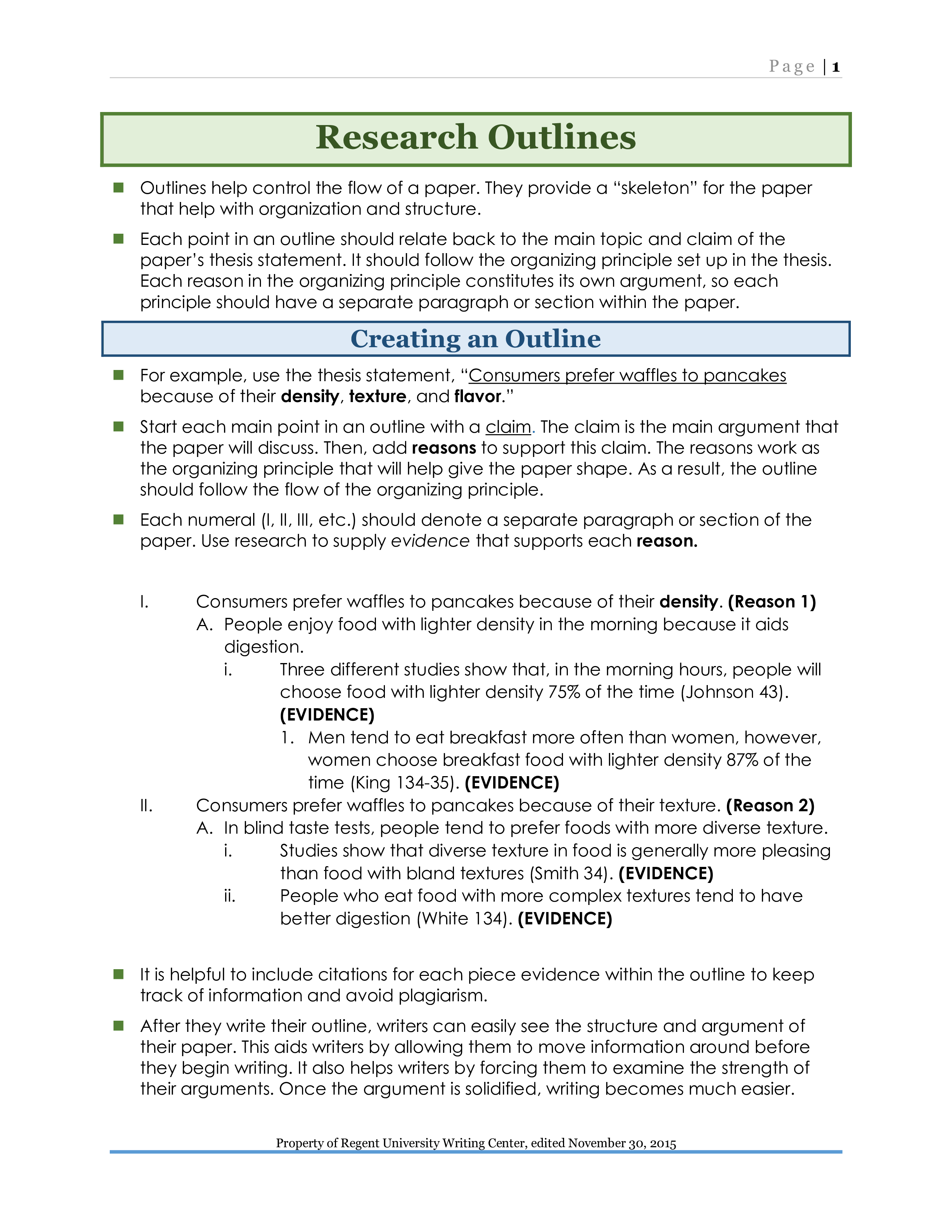Creating A Research Paper Outline
Sponsored Link免费模板 保存,填空,打印,三步搞定!

Download Creating A Research Paper Outline
Adobe PDF (.pdf)- 本文档已通过专业认证
- 100%可定制
- 这是一个数字下载 (112.17 kB)
- 语: English
Sponsored Link
How to write an academic research paper and what is it's outline? What is an outline for a research paper? Our template is easy to use and will help you create a well-structured and organized paper. It includes sections for an introduction, literature review, methods, results, and discussion. Download this Research Paper Outline template that will perfectly guide you through the process.
In a research paper outline, topics are listed in the intended order, usually divided into paragraphs, and the intended order is indicated. To stay organized, research papers typically include subtopics and evidence sources and a supporting outline. The purpose of a research paper outline is to help you think through your topic and organize it logically before the writing process begins. Now that I've shown how to write an introduction, it's time to provide some pointers on the body and conclusion of your work.
To facilitate your work, you can use this format and add details of the structure of your own research work. Note that this format may need to be modified depending on the type of research and the desired writing style. Scientists regularly need advanced templates, forms, spreadsheets, and often more than any other industry. Therefore, our website AllBusinessTemplates.com is updated every day with new suitable and up-to-date templates for your convenience.
For example, this Creating A Research Paper Outline template which can save you valuable time and can help you to reach the next level of success in your studies, research work or business!
- Outlines help control the flow of a paper. They provide a “skeleton” for the paper that help with organization and structure.
- Each point in an outline should relate back to the main topic and claim of the paper’s thesis statement. It should follow the organizing principle set up in the thesis.
- Each reason in the organizing principle constitutes its own argument, so each principle should have a separate paragraph or section within the paper.
How to write an academic research paper outline?
Writing an academic research paper outline involves organizing your thoughts, structuring your ideas, and creating a roadmap for your paper. Here's a step-by-step guide on how to write an academic research paper outline:
1. Understand the Requirements:
- Before you start outlining, make sure you understand the assignment requirements and any specific guidelines provided by your instructor or institution.
2. Choose a Research Topic:
- Select a clear and focused research topic. Your outline will be based on the key aspects of your chosen topic.
3. Identify the Main Sections:
- Determine the main sections your paper will include. Common sections include Introduction, Literature Review, Methodology, Results, Discussion, and Conclusion.
4. Develop a Thesis Statement:
- Craft a clear and concise thesis statement that outlines the main argument or purpose of your research. This statement will guide the entire outline and paper.
5. Create the Introduction:
- Introduce your topic and provide background information.
- Present the research question or problem.
- State the purpose of your study and its significance.
- End the introduction with your thesis statement.
6. Outline the Literature Review:
- Identify key themes and concepts from relevant literature.
- Organize your literature review logically, grouping similar ideas together.
- Highlight gaps in existing research that your study will address.
7. Define the Methodology:
- Describe your research design, including the type of study (e.g., qualitative, quantitative, mixed methods).
- Specify your sampling method and size.
- Detail the data collection techniques and instruments.
- Outline your data analysis plan.
8. Plan the Results Section:
- Determine how you will present your findings (e.g., through tables, graphs, or narrative).
- Consider the structure of the results section based on your research design.
9. Prepare the Discussion Section:
- Interpret your results and relate them to your research question.
- Discuss the implications of your findings.
- Address the limitations of your study.
- Propose recommendations for future research.
10. Summarize with a Conclusion:
- Provide a concise summary of your main points.
- Reiterate the importance of your study.
- End with a strong conclusion that leaves a lasting impression.
11. Include References:
- Compile a list of all the sources cited in your paper, following the citation style specified by your instructor.
12. Consider Additional Sections:
- If your paper requires appendices or additional sections, plan their content and placement in the outline.
13. Review and Revise:
- Go through your outline critically to ensure logical flow and coherence.
- Make revisions as needed to refine the organization and clarity of your ideas.
Remember that this outline is a flexible guide, and you can adjust it based on your specific research and writing process. Each section should contribute to the overall coherence and effectiveness of your research paper.
Try it now and let this scientific template inspire you. We certainly encourage to use this Creating A Research Paper Outline for your own science activities and are confident it will fit your needs.
Download this ready-to-use research paper outline template now!
DISCLAIMER
Nothing on this site shall be considered legal advice and no attorney-client relationship is established.
发表评论。 如果您有任何问题或意见,请随时在下面发布
相关文件
Sponsored Link

